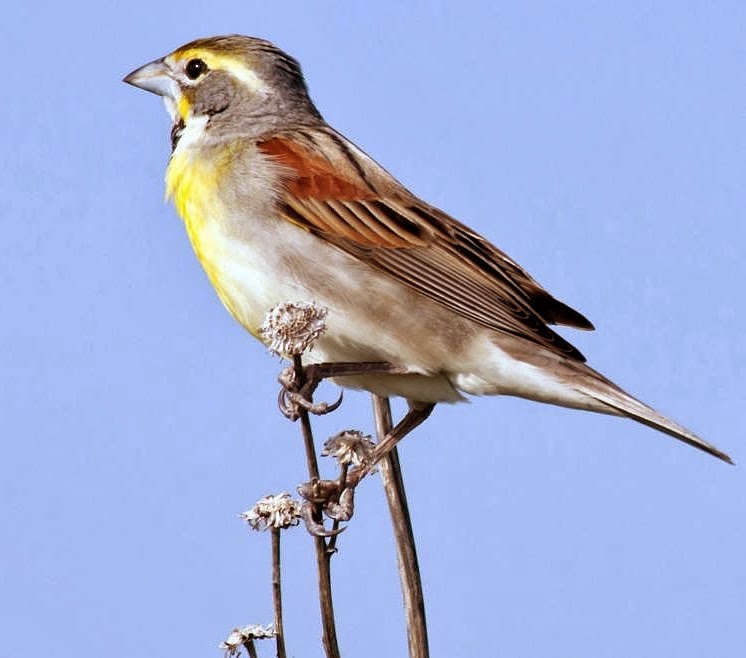 |
| (Photo from Internet Bird Collection) |
Common name:
dickcissel (en); papa-capim-americano (pt); dickcissel d’Amérique (fr); arrocero americano (es); dickzissel (de)
Taxonomy:
Order Passeriformes
Family Cardinalidae
Range:
This species breeds in central North America, ranging as far north as Minnesota, North Dakota and marginally into southern Canada, and south to Texas and South Louisiana. From east to west it ranges from the states of Ohio, Kentucky and Tennessee, west as far as Colorado. They migrate south to winter along the Pacific coast of central and southern Mexico, along the pacific slopes of Central America and into northern Colombia, Venezuela, Guyana and marginally into Brazil.
Size:
These birds are 14-16 cm long and have a wingspan of 25 cm. They weigh 23-29 g.
Habitat:
The dickcissel is mostly found in tall grasslands, including prairies, hayfields, cereal crops, lightly grazed pastures, and roadsides. They can also use moist savannas. This species is present from sea level up to an altitude of 1.500 m.
Diet:
They feed on seeds and insects. During winter they often flock over crop fields to eat grain and are considered a pest by farmers.
Breeding:
These birds breed in May-June. The female builds the nest alone, a bulky cup woven out of weed and grass stems, and lined with finer grasses, rootlets, and hair. It is usually placed slightly above the ground in dense vegetation. There she lays 3-6 pale blue eggs which are incubated for 12-15 days. The chicks are fed various invertebrates and fledge 8-10 days after hatching.
Conservation:
IUCN status – LC (Least Concern)
This species has a very large breeding range and the global population is estimated at 22 million individuals. The population suffered a dramatic decline in the 1960s and 1970s but is now considered stable although it may be still declining in some areas. In part of their wintering range they are hunted and illegally poisoned by farmers who consider them crop pests.







